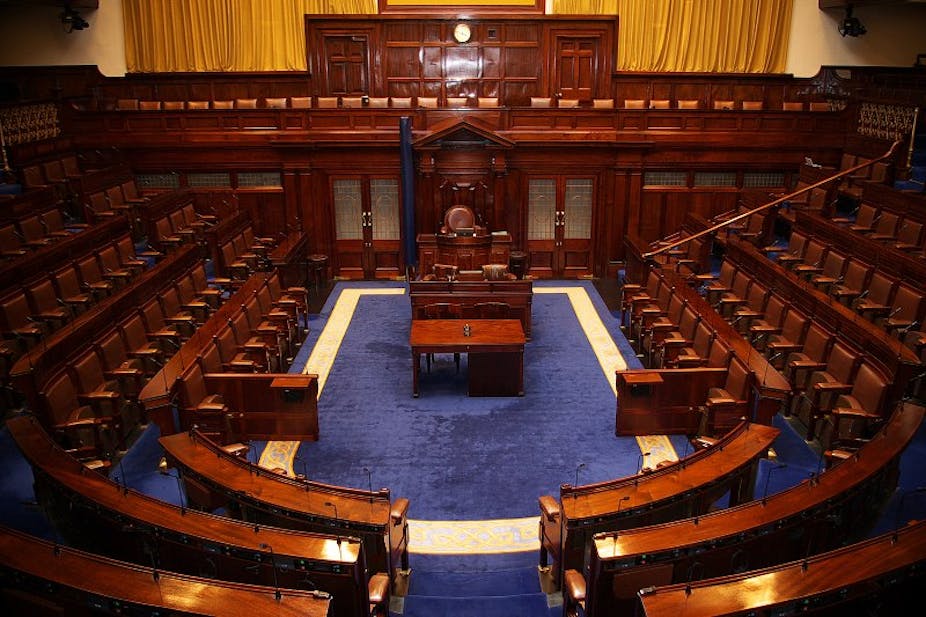A moment of truth has arrived for Seanad Éireann, the upper house of the Irish Parliament. The proposed amendment to the Constitution of Ireland seeks to abolish the indirectly elected, 60-member chamber after the next general election, with voters being asked to approve or reject the legislation to shut its doors.
For abolitionists, the opportunity is long overdue, with the upper chamber accused of being largely ineffective over its history, acting merely as a half-way house for would-be members of the lower chamber, Dáil Éireann, or something akin to a retirement home for more senior party members.
The constitutional provision for a prime minister to appoint 11 members of the new senate has long been criticised for embedding patronage appointments in parliament, and ensuring a government majority is guaranteed at all times. Apart from having a unique provision for six members to be elected by graduates of some third-level institutions in Ireland, the remaining majority of senators (43) are voted into office by an electorate consisting of local authority councillors and members of Dáil Éireann, a total of more than 1,000 politicians.
The Seanad had originally been envisaged as a chamber to represent five vocational or corporate interests in Irish society: labour, industry and commerce, culture and education, agriculture and administration. But the control held by political parties over the election of its members has ensured it reflects the partisan appearance of the lower house instead.
The Yes campaign also point to the lack of Seanad involvement in the election or dismissal of the executive, and its limited ability to delay rather than stop the progress of legislation from the other house. The main government party, Fine Gael, has consistently focused its campaign for a Yes vote on three major themes – the current Seanad is unreformable, it costs a lot of money, and abolition would result in fewer politicians.
For those leading the defence of the second chamber, the senate has become the sacrificial lamb for a political system that has struggled to find a remedy for the deep failures in the Irish system exposed by the recent economic crisis. What is needed is reform, they say, rather than abolition. Without Seanad Éireann, they appeal, an already centralised system of parliamentary government will become even more insulated from necessary checks on power. They argue the chamber has been the venue for some of Ireland’s more prominent public figures (and particularly those elected to the university seats) to present alternative viewpoints to those of the major parties.
The traditional role of the senate as a forum for minorities in Irish life has also been a feature of the No campaign. Its creation in 1922 originally served as a guarantee to allay the fears of a Protestant and principally Unionist community who suddenly found themselves in a very small minority with the Irish Free State. In the event, it was the Free State senate’s repeated attempts to frustrate the constitutional reforms of Eamonn deValera between 1932 and 1934 that led to its abolition in 1936. In a never fully understood about-turn, however, less than a year later the senate was re-constituted and rooted deep into the fabric of the deValera’s new constitution.
The debate over the chamber’s future has been fierce between political commentators, but journalists report relatively low levels of interest among an electoral more immediately concerned with the economy and the contents of the 2014 budget, due within a fortnight. Polls have consistently showed a majority in favour of abolition, but a large portion of “don’t knows” (a third of the electorate according to a poll just a week before the referendum) have ensured the campaigns on both sides have remained intense. Polls also suggest proposed financial savings have been the most commonly identified reason for voting Yes, though the government’s indicative figure of €20 million per annum is hotly disputed by the No side.
The government has produced some proposals for reform of the lower house to counteract claims of increased executive dominance in a one-chamber parliament. These include longer sittings, less use of the guillotine (restricting the time set for debate during the passage of a bill), more pre-legislative scrutiny, and provision for individuals, civil society and advocacy groups to become more involved in legislative development. How and when these will be implemented is not clear.
The Seanad’s role in Irish politics, its composition, electoral system and its very existence have persisted throughout its lifetime as matters of controversy. Today will finally bring this to an end. Then it’s all eyes to the budget as Ireland’s economy still struggles to recover.
This piece originally appeared on the Political Studies Association blog.

